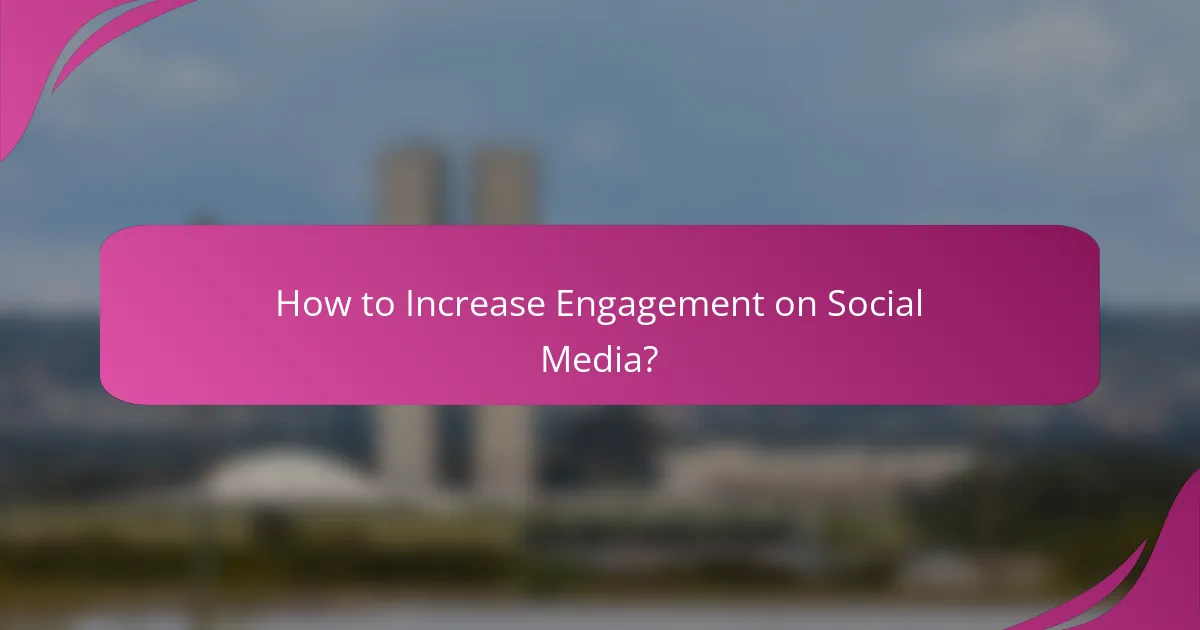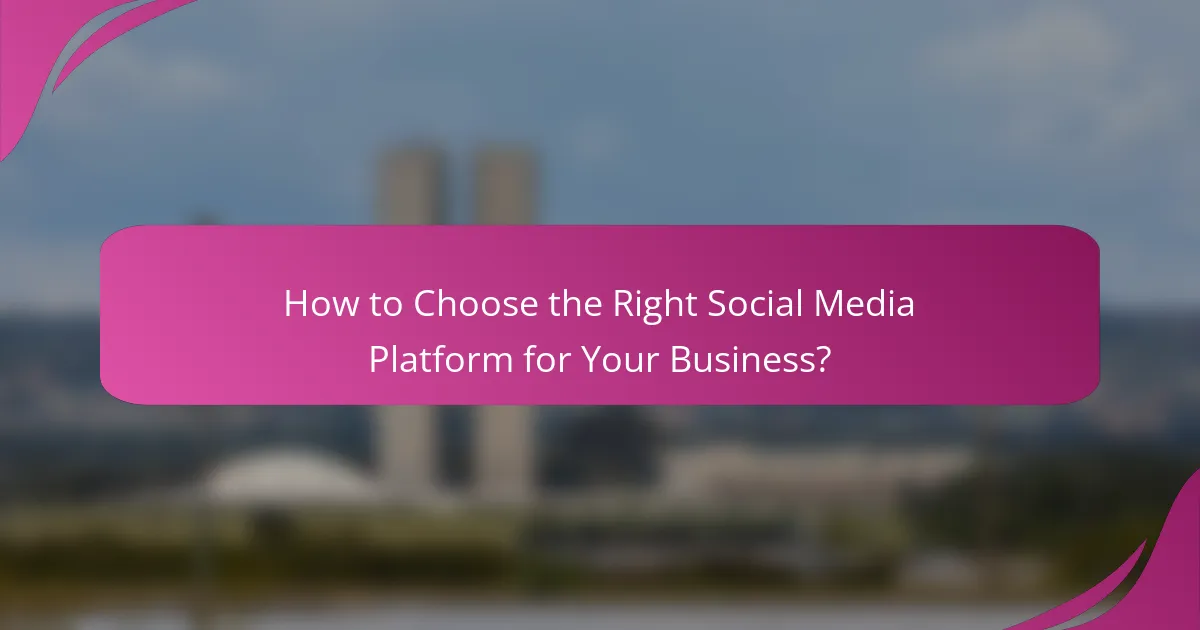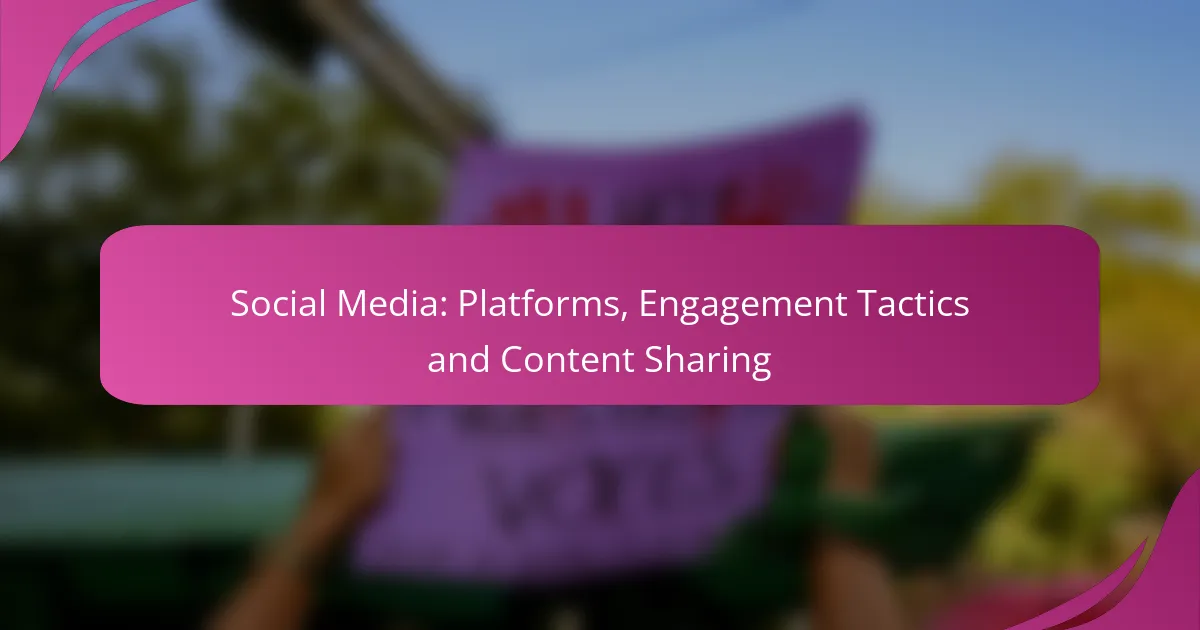Social media platforms are essential tools for reaching diverse audiences and achieving specific engagement goals. By leveraging unique features and creating compelling content, brands can foster meaningful interactions and enhance user participation. Employing various content types, such as videos and infographics, can further drive shares and expand your reach across networks.

Which Social Media Platforms Are Most Effective?
The most effective social media platforms vary based on your target audience and engagement goals. Each platform offers unique features that can enhance your marketing strategy and reach different demographics.
Facebook for broad reach
Facebook remains a leading platform for reaching a wide audience, with billions of active users worldwide. Its advertising tools allow businesses to target specific demographics, interests, and behaviors, making it effective for brand awareness and customer engagement.
To maximize your reach on Facebook, consider using a mix of organic posts and paid ads. Engaging content, such as videos and polls, can encourage interaction and sharing, further expanding your visibility.
Instagram for visual engagement
Instagram excels in visual storytelling, making it ideal for brands focused on aesthetics and lifestyle. With features like Stories, Reels, and IGTV, businesses can showcase products creatively and engage users through compelling visuals.
To enhance engagement on Instagram, use high-quality images and videos, and leverage hashtags to increase discoverability. Collaborating with influencers can also amplify your reach and credibility within niche markets.
LinkedIn for B2B networking
LinkedIn is the premier platform for business-to-business (B2B) networking, allowing professionals to connect and share industry insights. It is particularly effective for lead generation and establishing thought leadership in your sector.
To succeed on LinkedIn, focus on creating informative content that addresses industry challenges. Participating in relevant groups and engaging with other professionals can help build your network and enhance your brand’s visibility.
Twitter for real-time updates
Twitter is known for its fast-paced environment, making it suitable for sharing real-time updates and news. Brands can engage with their audience through timely tweets, trending topics, and customer service interactions.
To effectively use Twitter, maintain a consistent posting schedule and engage with followers through replies and retweets. Using relevant hashtags can also help your tweets reach a broader audience and join ongoing conversations.
TikTok for younger audiences
TikTok has rapidly gained popularity among younger demographics, particularly Gen Z and millennials. Its short-form video format encourages creativity and can lead to viral content, making it an attractive platform for brands targeting younger consumers.
To leverage TikTok, focus on creating entertaining and authentic content that resonates with users. Participating in challenges and trends can increase your visibility, while collaborations with popular creators can further enhance your reach.

How to Increase Engagement on Social Media?
To increase engagement on social media, focus on creating compelling content that resonates with your audience while employing strategic tactics. Consistent interaction and the use of various content types can significantly enhance user participation and connection with your brand.
Utilize interactive content
Interactive content, such as polls, quizzes, and surveys, encourages users to engage actively rather than passively consuming information. This type of content can increase participation rates and foster a sense of community among followers.
Consider using platforms like Instagram Stories or Facebook Polls to create interactive experiences. These tools allow you to gather feedback and insights while keeping your audience entertained and involved.
Post consistently
Consistency in posting is crucial for maintaining audience interest and engagement. Aim to establish a regular posting schedule, whether it’s daily, a few times a week, or weekly, depending on your audience’s preferences and platform norms.
Utilize content calendars to plan and organize your posts in advance. This approach helps ensure a steady flow of content and allows you to align your posts with relevant events or trends, maximizing their impact.
Leverage user-generated content
User-generated content (UGC) involves sharing content created by your followers, such as testimonials, photos, or videos featuring your products. This not only builds trust but also encourages other users to participate and share their experiences.
Encourage your audience to tag your brand in their posts or use specific hashtags. Highlighting UGC on your social media channels can create a sense of community and make followers feel valued and recognized.
Engage with followers
Engaging directly with your followers is essential for building relationships and fostering loyalty. Respond to comments, answer questions, and acknowledge mentions to show that you value their input and participation.
Consider hosting live Q&A sessions or responding to comments in real-time to create a more personal connection. This interaction can significantly enhance your brand’s image and encourage more users to engage with your content in the future.

What Content Types Drive Shares on Social Media?
Content types that drive shares on social media include videos, infographics, memes, and blog posts. Each type has unique characteristics that enhance engagement and encourage users to share with their networks.
Videos for high engagement
Videos are one of the most effective content types for driving engagement on social media. They can convey information quickly and are often more memorable than text or images alone. Aim for videos that are short, ideally under two minutes, to maintain viewer attention.
Consider using eye-catching thumbnails and captions to enhance visibility. Platforms like Instagram and TikTok favor video content, making them ideal for sharing engaging stories or tutorials that resonate with your audience.
Infographics for easy sharing
Infographics combine visuals and data to present complex information in an easily digestible format. They are particularly shareable because they can simplify topics and provide quick insights, making them appealing to users who prefer visual learning.
When creating infographics, focus on clarity and design. Use bold colors and clear fonts, and ensure that the information is accurate and relevant. Infographics are often shared on platforms like Pinterest and LinkedIn, where users seek informative content.
Memes for relatability
Memes leverage humor and cultural references to create relatable content that resonates with audiences. They are highly shareable due to their entertaining nature and can quickly go viral if they tap into current trends or sentiments.
To effectively use memes, stay updated on popular culture and internet trends. Ensure your memes align with your brand voice and values, as mismatched content can lead to backlash. Platforms like Twitter and Instagram are ideal for sharing memes that engage users.
Blog posts for authority
Blog posts establish authority and provide in-depth information on specific topics. They are valuable for sharing expertise and driving traffic to your website, which can lead to increased engagement across social media platforms.
When writing blog posts, focus on quality content that addresses your audience’s needs. Use compelling headlines and include shareable quotes or statistics to encourage social sharing. Promote your blog posts on platforms like Facebook and LinkedIn to reach a wider audience.

What Are the Best Practices for Social Media Marketing?
Effective social media marketing hinges on understanding your audience, setting clear objectives, and continuously refining your approach based on performance data. By following best practices, brands can enhance engagement and drive meaningful results across platforms.
Define target audience
Identifying your target audience is crucial for tailoring content and engagement strategies. Consider demographics such as age, gender, location, and interests to create a detailed profile of your ideal customer.
Utilize tools like surveys, social media insights, and analytics to gather data about your audience. This information will help you craft messages that resonate and encourage interaction.
Set clear goals
Establishing clear, measurable goals is essential for guiding your social media efforts. Goals may include increasing brand awareness, boosting engagement rates, or driving website traffic.
Use the SMART criteria—Specific, Measurable, Achievable, Relevant, Time-bound—to define your objectives. For example, aim to increase your follower count by 20% over the next three months.
Analyze performance metrics
Regularly analyzing performance metrics allows you to assess the effectiveness of your social media strategies. Key metrics to monitor include engagement rates, reach, impressions, and conversion rates.
Utilize analytics tools provided by platforms like Facebook and Instagram, or third-party services, to gather insights. This data will inform your understanding of what content works best and where improvements are needed.
Adapt strategies based on insights
Adapting your strategies based on performance insights is vital for ongoing success in social media marketing. If certain types of posts yield higher engagement, consider increasing their frequency.
Be flexible and willing to pivot your approach based on what the data reveals. Regularly review your goals and metrics to ensure alignment with your audience’s preferences and behaviors.

How to Choose the Right Social Media Platform for Your Business?
Choosing the right social media platform for your business involves understanding where your target audience spends their time and how each platform aligns with your marketing goals. Consider factors such as demographics, content type, and engagement potential to make an informed decision.
Assess target demographics
Understanding the demographics of your target audience is crucial when selecting a social media platform. Different platforms attract varying age groups, interests, and behaviors. For instance, platforms like Instagram and TikTok are popular among younger users, while Facebook tends to have a broader age range.
To effectively assess demographics, utilize tools like audience insights available on each platform. These insights can provide data on age, gender, location, and interests, helping you identify where your potential customers are most active. For example, if your business targets millennials, platforms like Instagram or Snapchat may be more effective than LinkedIn.
Additionally, consider the cultural context of your audience. In some regions, specific platforms may dominate due to local preferences or regulations. Tailoring your strategy to fit these nuances can significantly enhance your engagement and reach.
